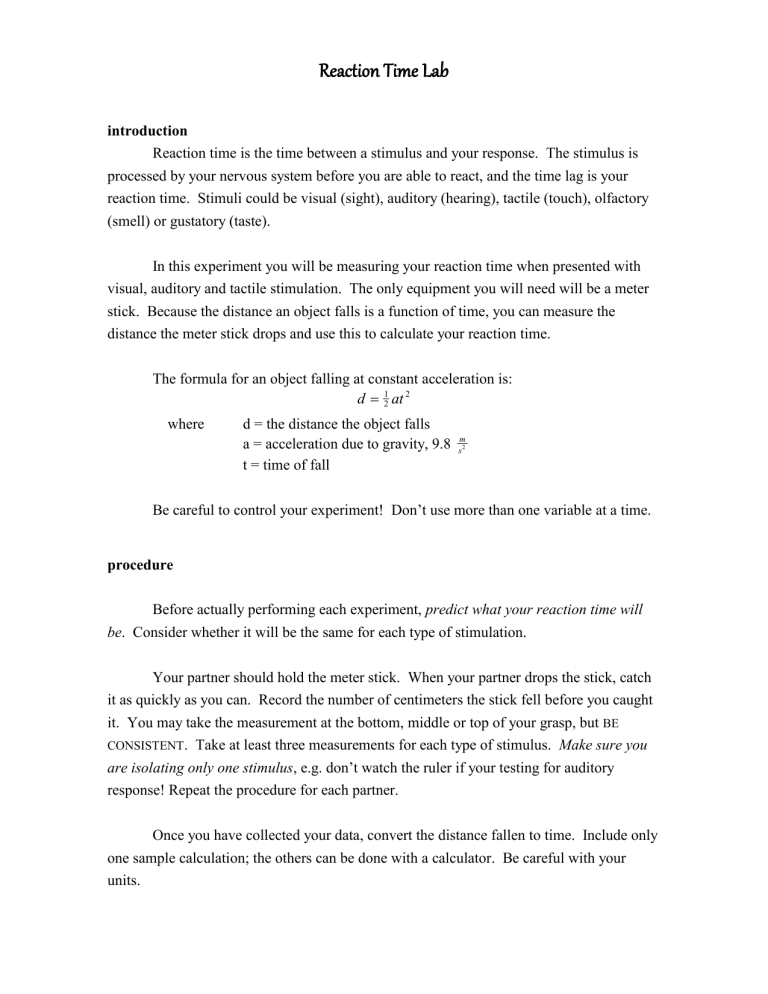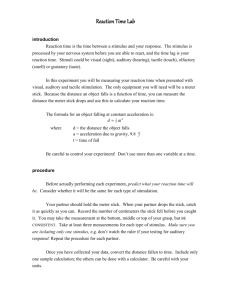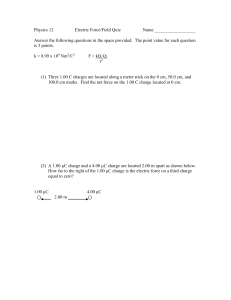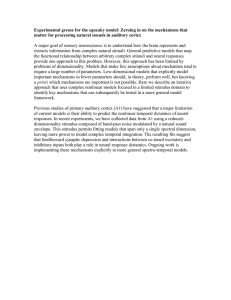
Reaction Time Lab introduction Reaction time is the time between a stimulus and your response. The stimulus is processed by your nervous system before you are able to react, and the time lag is your reaction time. Stimuli could be visual (sight), auditory (hearing), tactile (touch), olfactory (smell) or gustatory (taste). In this experiment you will be measuring your reaction time when presented with visual, auditory and tactile stimulation. The only equipment you will need will be a meter stick. Because the distance an object falls is a function of time, you can measure the distance the meter stick drops and use this to calculate your reaction time. The formula for an object falling at constant acceleration is: d 21 at 2 where d = the distance the object falls a = acceleration due to gravity, 9.8 t = time of fall m s2 Be careful to control your experiment! Don’t use more than one variable at a time. procedure Before actually performing each experiment, predict what your reaction time will be. Consider whether it will be the same for each type of stimulation. Your partner should hold the meter stick. When your partner drops the stick, catch it as quickly as you can. Record the number of centimeters the stick fell before you caught it. You may take the measurement at the bottom, middle or top of your grasp, but BE CONSISTENT. Take at least three measurements for each type of stimulus. Make sure you are isolating only one stimulus, e.g. don’t watch the ruler if your testing for auditory response! Repeat the procedure for each partner. Once you have collected your data, convert the distance fallen to time. Include only one sample calculation; the others can be done with a calculator. Be careful with your units. Reaction Time Lab predicted time (s) distance (cm) calculated time (s) average time (s) trial 1 Visual trial 2 trial 3 trial 1 Auditory trial 2 trial 3 trial 1 Tactile trial 2 trial 3 Show one sample calculation (distance must be in meters!!): t= 2d g 1) Why did you find an average time? In other words, how is averaging useful? 2) For which stimulus was your reaction time best? Why? 3) What might affect your reaction time? 4) Could you improve your reaction time? How? 5) How could reaction time introduce error into an experiment?




